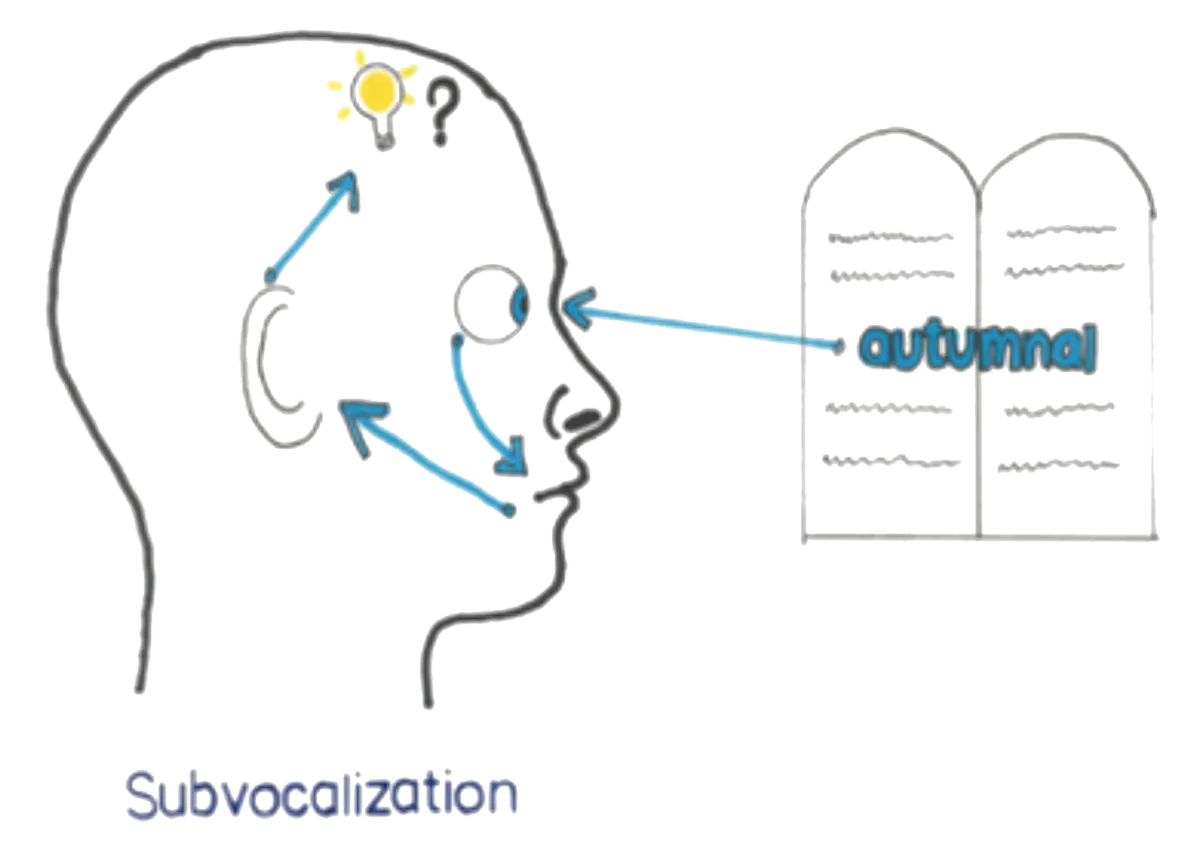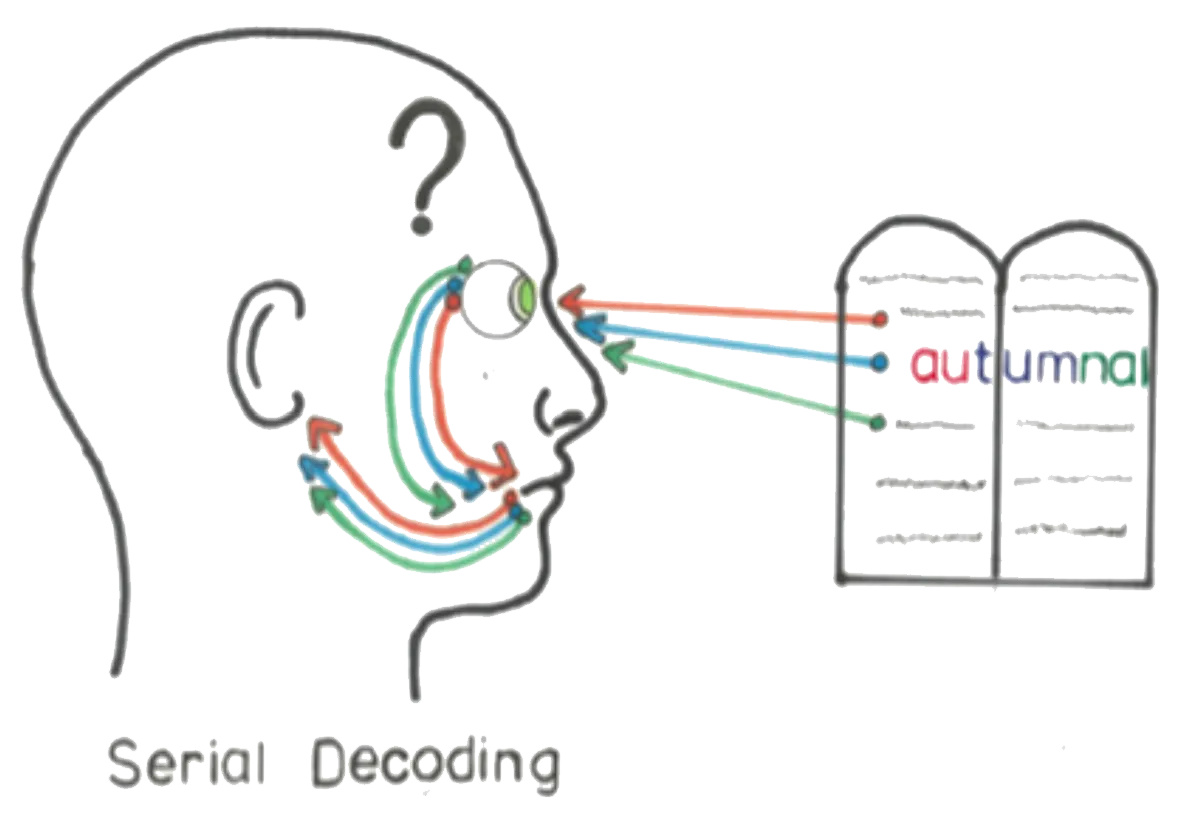
Our mission is to help every family take control of educating their children.
There is no purposeless behavior. To understand behavior, one must understand thinking and to understand thinking, one must understand vision.
All neuroscientists agree that the healthy human brain is an organ dominated by vision. All lay people agree that vision is the most precious sense.
Mind sight is the defining attribute that separates man from beast. God created man in his own image by blessing us with the ability to see through time and space. Mind sight gives man dominion over the earth and all its creatures. It is the tool of human beings. Mind sight defines us.

Mathematics is a language, just like English but with tighter tolerances. Both convey imagery, English with less precision. We might say English is a qualitative language, where mathematics is quantitative. For example, we might say "it is a long board" or increase precision by using the language of mathematics to say "it is an eight foot long board". Imagery is the central purpose in both statements, the language of mathematics is just more precise.
As with all languages, timing of instruction is the most important epigenetic factor. Yet-to-be visually competent students pressed too early avoid at first and maladapt upon continued pressure. Many habituate the sequential process of finger counting as their method of solving single digit math facts forever more, whereas already visually competent students quickly learn to instantly recall the “look” of equations. Proper timing relative to visual maturation is critical, a fact of neuroscience that is the most important epigenetic factor as to learning strategy.
Learning styles are learned at the intersection of demand and brain maturation.

Epigenetic Math Deflection
Math is wondrously filled with visual patterns. Most Americans fail to appreciate the grand symmetry of mathematics because we were all taught to approach math sequentially (part-to-whole) instead of visually (whole-to-part). For example, do you instantly know answer for 53 X 11? Likely not, given the right-to-left, part-to-whole method we were taught. If, as in India, you were taught to visually recognize the pattern for multiplying by 11 you would instantly recognize the answer as 583. The first digit is the tens place value, the last the unitary place value and the middle the sum of the two.


Likewise, multiplying 97 X 96 is a laborious process for American students, while Indian students learn to see patterns in numeric operations.
Ninety seven and ninety six are three and four less than one hundred, respectively. Applying a pattern of diagonal addition and vertical multiplication yields the first two place values and last two place values of the answer, respectively (9,312). The same pattern holds for the second example, 87 X 96 = 8352
What about 44 x 46?
If you recognized the pattern of equal tens place value and unit place value that summate to 10 (6+4=10), you would instantly recognize the answer is 2024. The first two digits are the product of the tens place value (4) times the next integer (5) (4 x 5 =20), the remainder of the solution is the product of the unit values 6 x 4 = 24, yielding 2024.
While these patterns are unfamiliar to most, with minimal practice everyone can “see” the answers to a great many math operations.
Instantaneous visual pattern recognition is a very valuable and trainable skill called subitizing. This strange word comes from the latin word subito which mean sudden recognition. Recognizing patterns of meaning is the mark of intelligence whether we are looking at numbers, text or walking through a forest. Visual pattern recognition is a skill worth training.
Visual pattern recognition gets applied hierarchically during intellectual development. Children learn to visually recognize patterns in objects followed by pictures and finally they are ready to see patterns in symbols. ICONIX pattern math helps students understand the meaning of math equations by respecting the maturation hierarchy of object → picture → symbol.
Meaning and usefulness of trigonometry becomes visually obvious when taught respecting proper neuro-developmental order of object, picture, symbol.

The trigonometric sine function can be used to track the height of a Ferris wheel seat (or any other cyclical circular motion) as it gains and loses altitude with rotation over time. If American students were taught to appreciate, even, look for visual patterns, perhaps they might gain some level of appreciation for the power and usefulness of math.
Mathematics and the four basic arithmetic operations, addition, subtraction, multiplication and division are pattern; consequently, students should be taught to recognize underlying patterns in order to learn at the speed of sight.

Spatial reading starts with a diagnosis. Sophisticated eye movement tracking reveals the reader’s insitu thinking for diagnosticians, parents, instructors and most importantly students themselves to see and understand. One must define the problem to have any hope of finding a solution. Reading in its most efficient form is a quest for patterns of meaning expressed in imagery of actions.
Sophisticated neuro-scientific analysis of brain activity, eye movement, attention and pupillary functions reveal three types of reading. ICONIX diagnostic methods help students, teachers and most importantly parents understand their child’s reading behaviors. We have found that when Mom understands the problem, the child is home free. Mom holds everyone accountable when she is well educated on the problem to be solved. ICONIX staff know that educating Mom is vital.
While there is no substitute for time-on-task, practicing proper reading technique, just like any skill, is critical to success. ICONIX diagnosticians and instructors use sophisticated technology to record various eye and attention functions to reveal, give feedback, and modify the reader’s thinking during reading.
The most important epigenetic factor to consider is timing relative to brain maturation. When reading is taught in its proper time and sequence, students master it with natural ease. When instruction is presented too early, the child is invited into maladaptation. We call such maladaptations deflected learning patterns.

We now realize that some previous assumptions about reading are incorrect. There are three types of readers.
The three types of readers:
1. Predictive Imagers
2. Serial Sub-vocalizers
3. Serial Decoders

Type I - Predictive Imagers
Imagery → Words

Type one predictive imagers are the most efficient readers. They read with great speed and comprehension. They love to read. They were fortunate to be visually dominant when reading was first introduced. They learned to read spontaneously and built expansive sight recognition vocabulary with natural ease.
They quickly mastered phonics which, ironically, was little needed nor often used when reading. The eyes reveal the mind, as they make very brief fixations on few words, mostly nouns and verbs. Their reading experience is all about “seeing the story.”
Type II - Serial Sub-vocalizers
Words → Imagery

Many people are Type II readers who look at (fixate) and convert nearly all words to sub-vocalized speech. Type I and Type II readers both create imagery with automaticity when listening. Type II readers convert textual (visual) language to spoken language before converting to imagery. Their eyes lead their mind.
They are looker, storyteller, listener and the final player in this deflected drama is the imager who operates with what precious little working memory remains. Type II readers are fully aware of their subvocalized speech during reading. Type II readers have many more and longer fixation duration than Type I readers.
Type II readers labor with marginal comprehension, tire quickly and often re-read passages for lack of comprehension. The ratio of nouns and verbs to total words fixated is much lower than Type I readers. Type II readers lead with their eyes, look at each word, convert each word to speech, listen to that speech, and finally create some imagery from the words they have sub-vocalized.
Type III - Serial Phonologic Decoders
Decoding → Words → Imagery

Type III readers are most unfortunate in that the reason for reading (imagery) is entirely lost to them. These individuals have, due to their lack of underlying visual skill, adopted the ubiquitous advice of nearly every parent, teacher, and tutor they encountered along their unhappy reading journey. They “sound out” nearly all words.
Decoding is their primary means of word recognition and therefore dominates awareness. Reading is a tedious task of serially puzzling out words. Type III readers dislike reading. When asked why reading is so hard, their typical response is, “words.”
By contrast, Type I readers don’t even recall having looked at words, they recall only the imagery they created. Type III readers make multiple fixations within words, puzzling their way through the rules of phonics.
Each word … a universe unto itself.
Decoding destroys fluency and comprehension.

We now know a great deal about reading, government schools apparently do not. Properly timed reading instruction relative to brain maturation is perhaps even more important than instruction itself. We are all aware of students who spontaneously read with very little effort. We are also aware that many different instructional approaches both succeed and fail depending on the child. Timing is the neglected major factor as the pendulum of instructional methods swings to and fro over the years.
Of course genuine effort is required in any case; it was recently reported that five large Baltimore high schools managed to produce just one proficient reader according to the 2021 Maryland state math and English tests. It is pointless to have any more discussion as to cause in such situations.
Parents must take matters into their own hands. Government schools have earned their fate.
ICONIX is on a mission to help everyone read faster, comprehend better, and retain longer.


